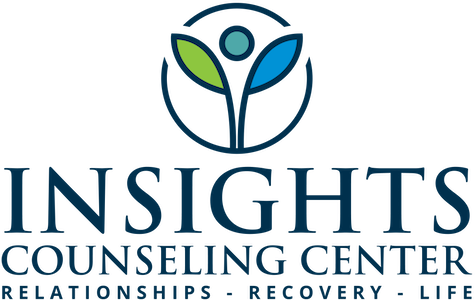What Are Schemas? How Life’s Early and Ongoing Messages Shape Adult Relationships
Have you ever reacted strongly in a conversation and later wondered, “Why did that hit me so hard?” Or noticed yourself repeating the same kind of relationship dynamic, even with different people? If so, you may be bumping into a schema—a deep emotional pattern formed not only in childhood, but sometimes across the lifespan, through painful or repetitive experiences.
In schema therapy, schemas are like invisible lenses. They shape how you see yourself, how you expect others to treat you, and how safe or lovable you feel in the world. These lenses are built from emotionally charged messages—some absorbed early from family, others picked up through hurtful friendships, romantic betrayals, cultural conditioning, or trauma later in life.
Understanding your schemas doesn’t mean blaming the past—it means reclaiming your future. Let’s explore how these powerful patterns develop and why working with them can be a turning point for relational healing.
How Schemas Form
Schemas are core emotional themes that begin in childhood—but not always. While many schemas do trace back to early caregiving experiences, others develop over time through repeated experiences of rejection, betrayal, bullying, marginalization, or instability. You may have internalized powerful emotional messages not just from your family of origin, but from school, peer relationships, romantic partners, religious or cultural systems, or traumatic events later in life.
As humans, we’re constantly making meaning out of our experiences. When emotional needs go unmet or are actively violated—especially over long periods of time—the brain and body adapt. We may learn to suppress our needs, overcompensate, numb out, or perform in ways that once helped us cope but now keep us stuck.
So while schema therapy often begins by exploring childhood roots, it also makes space for how life experience shapes us. No matter when or how your schemas formed, they can be unlearned. Understanding them is the first step toward reclaiming your voice, needs, and relationships today.
Common Early and Ongoing Messages That Become Schemas
Schemas are not just ideas. They’re emotional truths that feel deeply real, even if they’re not objectively accurate. For example:
“I’m not lovable unless I perform.”
“People always leave.”
“My feelings are too much.”
“If I let someone close, I’ll get hurt.”
“I don’t matter.”
These messages may come from your earliest years—or they may emerge later, shaped by chronic stress, repeated rejection, or relationship trauma. Either way, they often operate below the surface, influencing how you interpret other people’s behavior and how safe you feel in moments of connection.
The Impact on Adult Relationships
Schemas can quietly shape your entire relational landscape. Here are just a few examples:
Abandonment Schema: You may become anxious in relationships, constantly scanning for signs that your partner is pulling away. You might cling, protest, or sabotage closeness to avoid the pain of being left.
Defectiveness/Shame Schema: You may hide your true self, struggle with vulnerability, or choose partners who confirm your feelings of unworthiness.
Subjugation Schema: You may silence your needs, defer to others, or become resentful after giving too much for too long.
Mistrust/Abuse Schema: Even when someone is kind, you might find it hard to relax or believe their intentions are good. You may test people or keep them at a distance without meaning to.
The most painful part? These reactions often feel justified in the moment. You may not recognize that what you’re reacting to is a present-day trigger lighting up an old emotional wound.
“You can’t change what you lived through,
but you can change how it lives in you.”
Why Insight Alone Isn’t Enough
Many people come to therapy with insight: “I know where this comes from.” But knowing your patterns isn’t the same as healing them. That’s where schema therapy becomes so powerful—it works not only with your thoughts, but with your emotions, your memories, and the vulnerable parts of you that still need care.
Schema therapy helps you:
Identify the emotional messages still influencing your reactions
Recognize how you adapted to survive
Differentiate past pain from present reality
Practice new ways of relating—with yourself and others
It also works with modes—moment-to-moment emotional states that reflect the different parts of you: the protector, the inner critic, the child self, and the healthy adult. By learning to identify and respond to these parts with compassion and clarity, you begin to change not just what you do, but how you feel inside your relationships.
Healing the Relational Blueprint
You are not doomed to repeat the same dynamics forever. With care, insight, and new relational experiences—including within the therapy relationship—it is possible to rewrite the blueprint.
Schema healing happens through:
Safe, attuned connection
Corrective emotional experiences
Practicing new responses in real life
Learning how to meet your own core needs without shame
It takes time, but it’s worth it. When you begin to see your patterns not as personal failures but as survival strategies, you can stop fighting yourself—and start supporting your own healing.
Rewriting the Story Starts Here
Schemas may have been written early in your life—or later, during difficult chapters—but they don’t have to be the final story. Therapy can help you explore where these patterns come from and how to loosen their hold. More importantly, it can help you build new ways of connecting that are safe, flexible, and rooted in who you are—not just what you went through.
If you’re ready to stop reliving old relational stories and start creating new ones, we’re here to walk with you. Let’s begin the process of deep, lasting change together.

